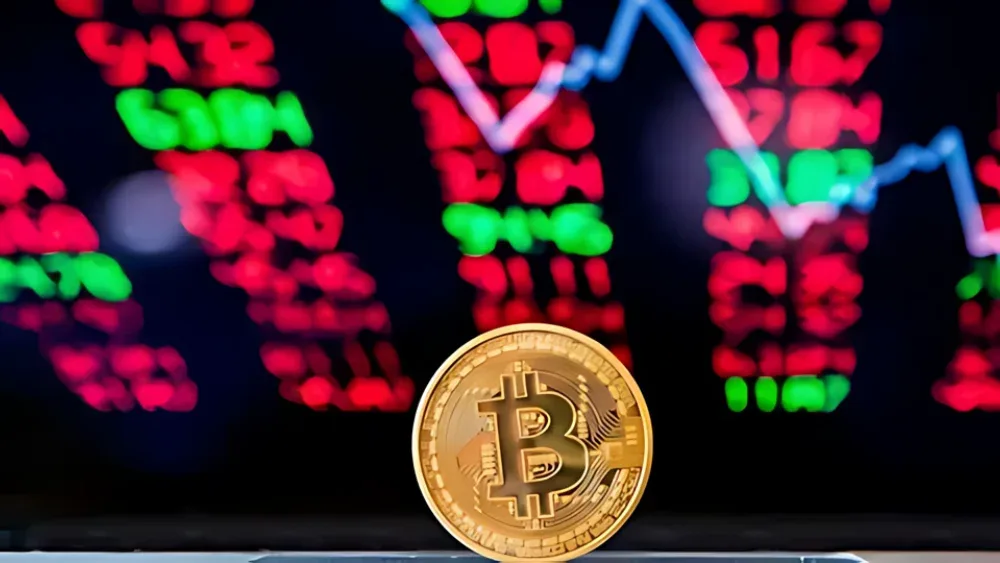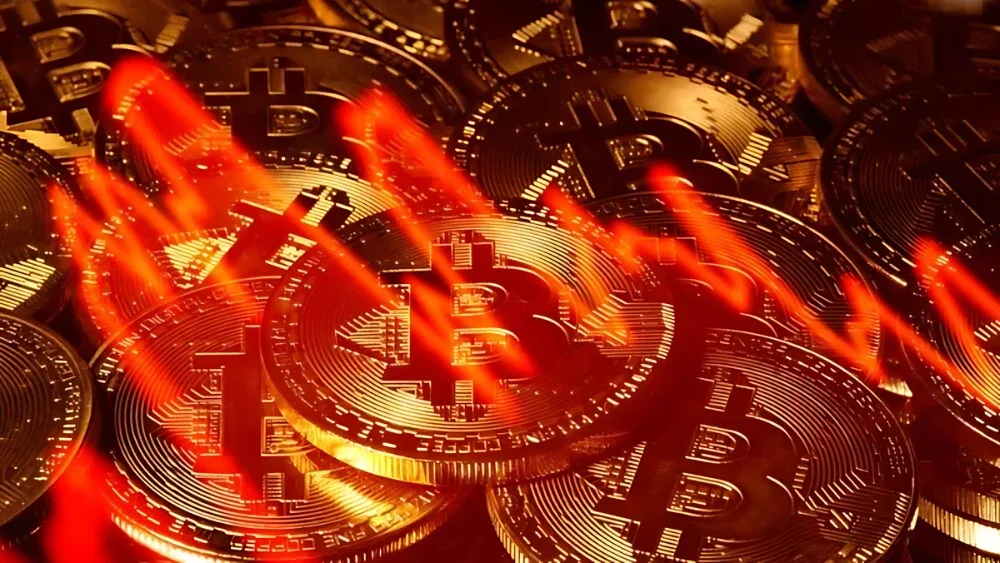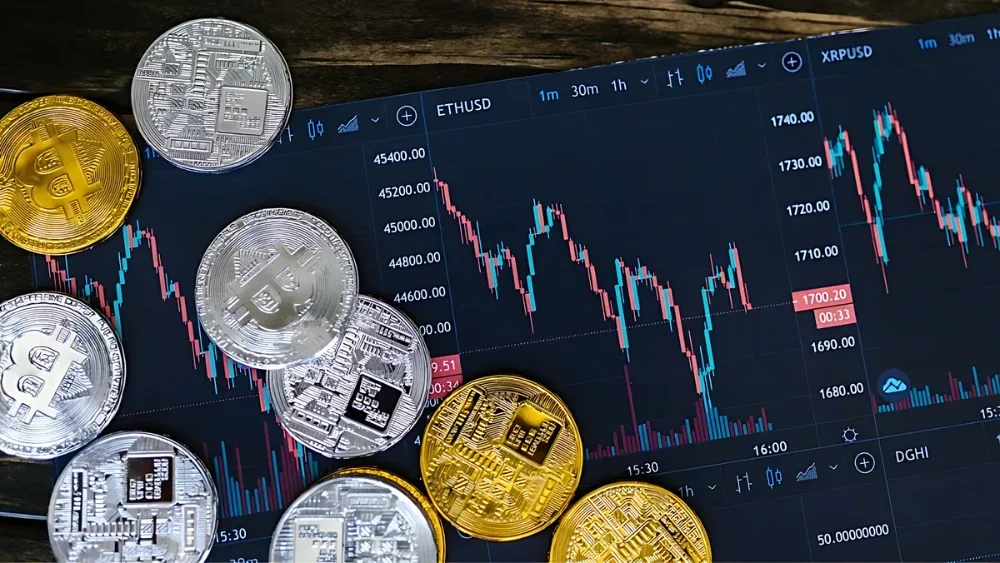Worried about the crypto market crash? Dive into our comprehensive guide to understand what triggered the downfall, explore the aftermath, and discover strategies to navigate the volatile world of cryptocurrencies. Stay informed and stay ahead!
Table of Contents
Introduction
Cryptocurrency. It’s a word that’s sparked both dreams of instant wealth and fears of total financial ruin. Over the years, we’ve seen the crypto market explode with promise, only to come crashing down when the hype met reality. The latest crypto market crash has left a lot of folks scratching their heads, wallets lighter, wondering, “What on earth just happened?” If you’re feeling that way too, you’re not alone. But don’t worry—we’ve got your back. This article dives deep into the causes behind the crash, the aftermath, and what you can do to protect your investments moving forward.
What Exactly is a Crypto Market Crash?

A Roller Coaster You Didn’t Sign Up For
Imagine waking up one morning to find that your crypto portfolio has taken a nosedive overnight. What was worth thousands or even millions is suddenly worth a fraction of that. That’s a crypto market crash in a nutshell. It’s not just a dip or a little blip on the radar—it’s a full-on plummet, where the value of most cryptocurrencies drops sharply in a short period.
But why does this happen? Well, a crypto market crash is typically triggered by a combination of factors:
- Market Sentiment: If investors lose confidence, they start selling, and prices tumble.
- Regulatory Changes: Government crackdowns or new regulations can spook the market.
- Economic Events: A recession or other economic downturns can make investors shy away from riskier assets like crypto.
- Technological Failures: Hacks, security breaches, or glitches can lead to panic selling.
When all these forces come together, it’s like a perfect storm that leaves the market in shambles.
The Anatomy of the Crash: A Quick Timeline
Let’s break down a typical crypto market crash. It usually starts with a significant event—a big player pulling out, a government ban, or bad news about a major cryptocurrency. This triggers panic among investors, leading to a massive sell-off. Prices drop, and as they do, more people sell, trying to cut their losses. The domino effect continues until the market hits rock bottom.
During a crash, you might notice:
- Bitcoin and Ethereum leading the charge downward, with smaller altcoins following suit.
- Trading volumes spiking as investors scramble to offload their assets.
- Social media and news outlets going into overdrive, amplifying the panic.
Remember the 2018 Crypto Winter?
If you’ve been in the crypto game for a while, you might remember the infamous “Crypto Winter” of 2018. It was a time when the market was frozen—prices plummeted, and it took months for things to thaw out. The 2018 crash was triggered by a mix of regulatory fears and overvaluation, wiping out nearly $700 billion in market value. It serves as a stark reminder that what goes up must come down, especially in the volatile world of crypto.
The Aftermath: What Happens After a Crypto Market Crash?

The Dust Settles: Recovery or More Trouble Ahead?
After the initial shock of a crypto market crash, things can go one of two ways: recovery or further decline. Sometimes, the market bounces back quickly, as investors scoop up what they see as “cheap” coins. Other times, it takes a while for confidence to return. The aftermath is often marked by uncertainty, as traders and investors wait to see which way the wind will blow.
Who Gets Hit the Hardest?
Not all investors are affected equally by a crypto market crash. The ones who typically feel the most pain are:
- Newbies: Those who got into crypto during the hype and didn’t see the crash coming.
- Leverage Traders: Investors who borrowed money to trade and now owe more than they have.
- Altcoin Enthusiasts: Those heavily invested in smaller, less established coins, which often take the biggest hits.
On the flip side, seasoned investors might see the crash as an opportunity, buying low in hopes of selling high later on.
The Ripple Effect: Beyond Your Portfolio
A crypto market crash doesn’t just impact your portfolio. It can have broader implications for the global economy, especially as cryptocurrencies become more intertwined with traditional financial systems. Here are some potential ripple effects:
- Banking Sector: As crypto gains traction, banks that have exposure to the sector could face losses.
- Tech Industry: Companies that rely on blockchain technology or have invested heavily in crypto might see their stock prices drop.
- Consumer Confidence: If people lose faith in crypto, it could impact broader economic confidence, especially among younger investors.
What’s Next? Predictions and Possibilities

Will the Market Recover?
That’s the million-dollar question, isn’t it? Historically, the crypto market has shown remarkable resilience, bouncing back after each crash, sometimes even stronger than before. However, it’s essential to remember that past performance doesn’t guarantee future results. Several factors will determine whether the market recovers and how quickly:
- Regulatory Clarity: Governments around the world are still figuring out how to handle crypto. Clearer regulations could stabilize the market.
- Institutional Adoption: More companies and financial institutions getting on board could boost confidence.
- Technological Advancements: Innovations in blockchain technology might drive the next wave of growth.
But—and it’s a big but—there’s always the risk that the market won’t recover, at least not to its previous highs. That’s why it’s crucial to stay informed and prepared for whatever comes next.
The Rise of Stablecoins: A Safe Haven?
In the wake of a crypto market crash, many investors turn to stablecoins—cryptocurrencies pegged to a stable asset like the US dollar. Stablecoins offer a refuge during times of volatility, providing a way to stay in the crypto market without exposing yourself to massive price swings. But be warned, even stablecoins aren’t entirely risk-free. If the issuer can’t back up the coins with real assets, you could still be in for a nasty surprise.
New Opportunities: The Silver Lining
Believe it or not, a crypto market crash can present new opportunities for savvy investors. Here’s how you can turn lemons into lemonade:
- Buy the Dip: If you believe in the long-term potential of a cryptocurrency, buying during a crash can be a smart move.
- Diversify: Use the crash as a reminder not to put all your eggs in one basket. Spread your investments across different asset classes.
- Educate Yourself: Take the downtime to learn more about the market, so you’re better prepared for the next wave.
How to Protect Yourself in Future Crashes

Don’t Put All Your Eggs in One Basket
You’ve probably heard this before, but it’s worth repeating: diversify, diversify, diversify. Don’t sink all your money into one cryptocurrency. Spread your investments across a range of assets—stocks, bonds, real estate, and, yes, even crypto. This way, if one market crashes, you won’t lose everything.
Keep Your Emotions in Check
It’s easy to let fear and greed drive your investment decisions, but that’s a surefire way to get burned. When the market’s up, don’t get too cocky; when it’s down, don’t panic. Stick to your investment strategy and avoid making rash decisions.
Stay Informed
Knowledge is power, especially in the fast-moving world of cryptocurrency. Keep up with the latest news, trends, and regulatory developments. The more you know, the better equipped you’ll be to navigate the ups and downs.
Have an Exit Strategy
Before you invest, know when and how you’re going to get out. Whether it’s setting a stop-loss order or having a target price in mind, an exit strategy can save you from making decisions in the heat of the moment.
Conclusion: Ride the Waves, Don’t Get Wiped Out
The crypto market is like the Wild West—exciting, full of potential, but also dangerous if you’re not careful. While the recent crypto market crash has shaken things up, it’s not the end of the world. By staying informed, keeping your emotions in check, and having a solid strategy, you can navigate the stormy seas of cryptocurrency without getting wiped out.
Understanding How Cryptocurrency Works
FAQs About the Crypto Market Crash
Q: Is it possible to predict a crypto market crash?
A: While some signs can point to an impending crash (like market overvaluation or regulatory crackdowns), it’s almost impossible to predict precisely when a crash will happen. The best you can do is stay informed and be prepared.
Q: Should I sell all my crypto during a crash?
A: Not necessarily. Selling during a crash locks in your losses. Instead, consider your long-term investment strategy and whether you believe the market will recover.
Q: What’s the difference between a correction and a crash?
A: A correction is a short-term decline of about 10-20% in the market, often seen as a healthy pullback after a significant run-up. A crash, on the other hand, is a sharp, sudden drop of more than 20%, usually driven by panic selling.
Q: Can I make money during a crypto market crash?
A: Yes, but it’s risky. Some investors make money by shorting cryptocurrencies (betting that their prices will go down) or by buying the dip. However, both strategies require a good understanding of the market and come with substantial risk.
By: Paisainvests



